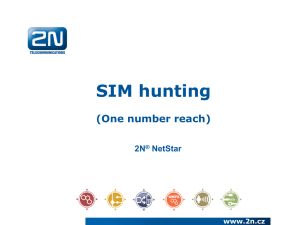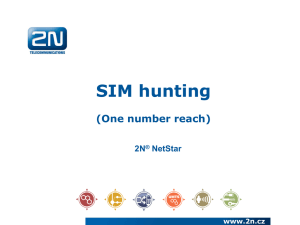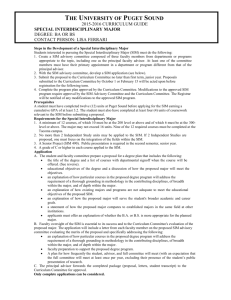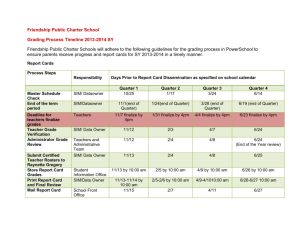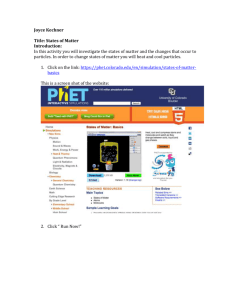GS/MS Specifications
advertisement
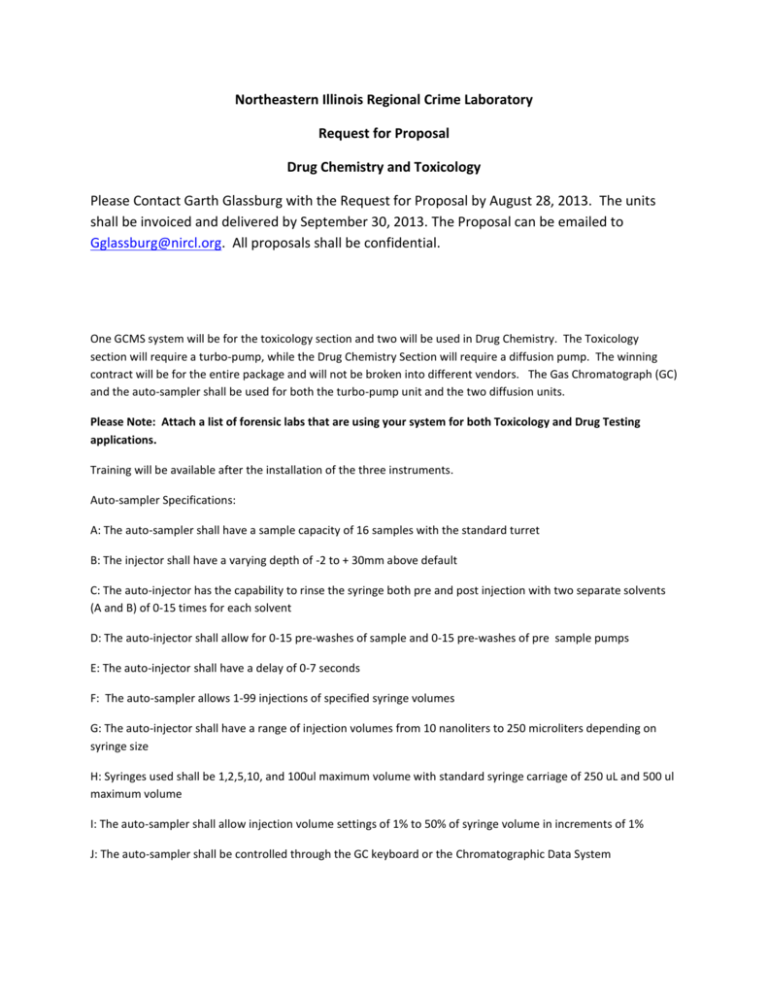
Northeastern Illinois Regional Crime Laboratory Request for Proposal Drug Chemistry and Toxicology Please Contact Garth Glassburg with the Request for Proposal by August 28, 2013. The units shall be invoiced and delivered by September 30, 2013. The Proposal can be emailed to Gglassburg@nircl.org. All proposals shall be confidential. One GCMS system will be for the toxicology section and two will be used in Drug Chemistry. The Toxicology section will require a turbo-pump, while the Drug Chemistry Section will require a diffusion pump. The winning contract will be for the entire package and will not be broken into different vendors. The Gas Chromatograph (GC) and the auto-sampler shall be used for both the turbo-pump unit and the two diffusion units. Please Note: Attach a list of forensic labs that are using your system for both Toxicology and Drug Testing applications. Training will be available after the installation of the three instruments. Auto-sampler Specifications: A: The auto-sampler shall have a sample capacity of 16 samples with the standard turret B: The injector shall have a varying depth of -2 to + 30mm above default C: The auto-injector has the capability to rinse the syringe both pre and post injection with two separate solvents (A and B) of 0-15 times for each solvent D: The auto-injector shall allow for 0-15 pre-washes of sample and 0-15 pre-washes of pre sample pumps E: The auto-injector shall have a delay of 0-7 seconds F: The auto-sampler allows 1-99 injections of specified syringe volumes G: The auto-injector shall have a range of injection volumes from 10 nanoliters to 250 microliters depending on syringe size H: Syringes used shall be 1,2,5,10, and 100ul maximum volume with standard syringe carriage of 250 uL and 500 ul maximum volume I: The auto-sampler shall allow injection volume settings of 1% to 50% of syringe volume in increments of 1% J: The auto-sampler shall be controlled through the GC keyboard or the Chromatographic Data System K: The injector shall hold up to 2 vials of solvent. Each vial is 4 ml with 2 ml of solvent usable solvent. The system holds 10 4 ml vials with solvent capacity of 20 mls L: The auto-sampler shall be auto-aligning and is installed or removed with or without tools M: The sample tray shall hold at least 150 vials N: The system shall allow access, randomly, to all vial positions on the tray O: There must be removable trays P: The vial must be gripped so that the vial is grabbed by the sides, not under the cap Q: There must be a sensor so that the sampler verifies the vial is held R: An optional chiller module with a sensor to monitor average coolant temperature in plate of 5-60 degrees C. GC Specifications: A: Retention time repeatability: <0.008% or <0.0008 min B: Six EPC modules can be installed, providing control of up to 16 channels of EPC C: With capillary columns, four modes are available, constant pressure, ramped pressure (3 ramps), constant flow or ramped flow (3 ramps). Column average velocity is calculated. D: The GC soft-ware shall be able to have counters, chromatographic attributes, instrument diagnostics, maintenance run and logs, access to manuals and videos E: The LAN interface must allow real-time monitoring of the GC when connected with monitoring software when connected to the data system F: Have preprogrammed leak tests G: Oven must accommodate up to two capillary columns H: Oven operating range shall be +4 C to 450 C over ambient temperature I: Oven temperature set point shall be 0.1 C J: Oven supports up to 20 ramps with 21 plateaus. Negative ramps allowed. K: Ramp rates are up to 120 C/minute L: Maximum run time shall be verified M: Ramp rates for temperatures of 175 to 300 C shall be 80 degrees per minute and at least 50 degrees per minute at 300-450 C. N: Cool down (22 C ambient) 450 to 50 C in 4 minutes O: Oven rejection of <0.01 C/min P: Oven turns off when door opened Q: Gas turns off if inlet pressure drops significantly R: Pneumatics are electronic and programmable S: Inlet must have electronic pneumatic control of carrier, split and septum purge gases including ON/OFF T: Available pressure units are psi, kPa or bar U: Carrier gas types supported are He, hydrogen, and nitrogen V: Inlet modules have accuracy of , <+ 2% full scale, flow sensors of <+5% (repeatability of <+0.35% and detector modules of <+3ml/min W: Have two inlets from the following: split/split-less, purged packed injection port, temperature programmed cool on-column, programmable temperature vaporizer and volatiles inlet X: Split/split-less inlets must have electronic control of carrier, split and septum purge gases and electronic ON/OFF: modes of split, split-less and pressure pulsed split-less Y: Gas saver mode built in the unit Z: The split and septum purge changed without altering the column flow AA: The system shall met ISO 9001 guidelines Gas Chromatograph Safety Features a. Auto reboot after power failure to restore heated zones b. Hydrogen carrier gas safety features. Vendor must be able to demonstrate the safeguards. (e.g. connections to vent exhausted gas, built-in leak detection/automated shutdown features) Two GC/MS with a Diffusion Pump for Drug Chemistry Mass Spectrometer must include the following features: a. The Quadrupole mass filter shall consist of a monolithic quartz structure with a true hyperbolic shape. b. The Quadrupole is independently heated to be user selectable from 100-200 degrees centigrade; c. Ion source can be temperature controlled from 100-350 degrees centigrade; this source is constructed from a solid inert source which is not stainless steel d. Quadrupole electrode surfaces covered by titanium composite and gold thin and thick films to prevent oxidation e. Mass filter and Detector on the same plate as Ion Source for accessibility f. Electronic scan rate of 20,000 u/sec g. Mass range scan from 1.6 to 1050 u. h. SIM capacity 100 groups with capacity of a minimum of 60 ions per group i. SIM dwell time set in 1 msec interval, to as low as 1 msec dwell j. Electronics shall have the capacity to collect SCAN and SIM data with the same acquisition cycle; SIM setup shall have the ability to convert to a full Scan method to a SIM method or a SIM/SCAN method and configure the number of SIM groups, SIM cycles across a peak with the ions added to each group. k. Maximum column flow to MS is 3 mL/min Sensitivity a. Capable of yielding at least 300:1 S/N from a 1-ul injection of 1pg/ul of octafloronapthalene (OFN) scanning from 50-300 u at nominal m/z 272 ion at install. Tune Parameters a. Tunes using a calibration gas of perfluorotributylamine (PFTBA) b. Tune options to include a customizable tune and a standard tune with an “automated “field” to set and store relative abundance target values for various ions. c. Calibration valve must automatically open when the tune is started and must automatically close when tune is completed. d. Easy access to refill reference standard in calibration valve. Filament a. Gives an error message that filament is blown (i.e. no emission current) and stops the GC/MS run. b. Easy access to source and filament(s) for cleaning and replacement. c. Ability to change filaments without cooling and venting the system such as dual filaments with a filament selection and status indicator controlled by the system software Mass Spectrometer Safety Features a. Safety system protection for vacuum loss, excess signal and excess temperature b. The system has a vacuum monitoring with readout, such as ion gauge controller. c. Auto reboot after power failure to restore heated zones and vacuum systems or appropriate safeguards Gas Chromatograph Injection Port a. Injector port to include flip-top or turn top inlet system. Injector port must handle the mechanical septa. (e.g. Jade Valve, Merlin Microseal) Data System Report Capabilities a. The data system must have the ability to save instrument parameters with each data file. Data files can be automatically assigned or manually entered in the batch or sequence table. Data files must be retrievable for reprocessing purposes and not be overridden without a message prompt. b. The data system must have the capability of allowing the user to add, delete or reuse positions, in nonsequential order, during a batch or sequence run without stopping or requiring a restart, and be capable of analyzing at least several different methods and multiple injection volumes. c. The data system has the capability of retrieval of information that tracks instrument operation. d. The data system must allow the user to select run parameters with a single method choice. This method would set parameters for the injection, GC, MS and post-acquisition macros. e. The data system must allow sequences to contain multiple methods using different instrument tunes. f. The data system must have the ability to tune specific ions. g. The computer workstations must be capable of being connected to the laboratory’s intranet. h. The data system must allow for the addition of user libraries with all of the same search capabilities as commercially marketed libraries. i. Data system must do ion searches and subtractions. Data System Macro Capabilities a. The data system must be capable of at least one or both of the following: 1. Allows the user to write macro programs for data processing and report generation. The system must process existing NIRCL macros 2. A reporting program integrated with the software which allows for customized report templates, to include headers and footers on every page, and the capability to print multiple Total Ion Chromatograms (TIC) and spectra on a page. Reporting a. Header information reflects sample information pulled directly from a data file. Reprocessed data must reflect the original instrument parameters, including the original run date and time. b. Have an absolute footer able to reflect instrument conditions at time of run. c. Print multiple spectra for one sample per page. d. Print multiple samples per page. Must have inset chromatogram, pre-purge and post-purge of the spooler. e. Ability to print a TIC and spectrum on one page with the header and footer, exactly as they appear on the screen and the ability to only print the TIC on a single page without a spectrum. f. Ability to have multiple integration target areas, but only print a TIC and spectrum when a peak is found in the target area. Commodities to be quoted with each system: a. Wiley Registry 10th Edition / NIST 2012 Mass Spectral Library or most current edition (digital copy) b. Mass Spectral and GC Data of Drugs, Poisons, Pesticides, Pollutants and Their Metabolites, by Hans H. Maurer, Karl Pfleger, Armin A. Weber , most current edition (digital copy and volume set) c. Mass Spectra of Designer Drugs 2012 by Peter Rösner most current edition (digital copy) d. Other libraries available on your system, either for purchase or access. e. Ion Gauge Detector that measures Torr in the Mass Spectrometer Electrical Instrumentation utilizes 120 VAC or 208 VAC, unless otherwise approved by NIRCL and the VAC requirement is clearly stated. One GC/MS with a Turbo Pump for Toxicology Mass Spectrometer must include the following features: a. The Quadrupole mass filter shall consist of a monolithic quartz structure with a true hyperbolic shape. b. The Quadrupole is independently heated to be user selectable from 100-200 degrees centigrade; c. Ion source can be temperature controlled from 100-350 degrees centigrade; this source is constructed from a solid inert source which is not stainless steel d. Quadrupole electrode surfaces covered by titanium composite and gold thin and thick films to prevent oxidation e. Mass filter and Detector on the same plate as Ion Source for accessibility f. Electronic scan rate of 20,000 u/sec g. Mass range scan from 1.6 to 1050 u. h. SIM capacity 100 groups with capacity of a minimum of 60 ions per group i. SIM dwell time set in 1 msec interval, to as low as 1 msec dwell j. Electronics shall have the capacity to collect SCAN and SIM data with the same acquisition cycle; SIM setup shall have the ability to convert to a full Scan or SIM method and configure the number of SIM groups, SIM cycles across a peak with the ions added to each group. k. Maximum column flow to MS is 4 mL/min l. Ability to back-flush at end of run to keep source cleaner m. Ability to change GC column without venting MS n. Shall have a “2-way splitter” to merge two columns in one Mass Detector j. . Ion source can be temperature controlled from 100-350 degrees centigrade; this source is constructed from a solid inert source which is not stainless steel o. SIM capacity 100 groups with capacity of a minimum of 60 ions per group p. Electronics shall have the capacity to collect SCAN and SIM data with the same acquisition cycle; SIM setup shall have the ability to convert to a full Scan or SIM method and configure the number of SIM groups, SIM cycles across a peak with the ions added to each group q. SIM speed down to 0.1 msec r. Software automatically can configure the number of SIM groups, with SIM cycles across the peak and ions added to each group s. Maximum column flow shall be between 1 and 2 ml/min in EI with the maximum sustained flow of 50 mL/min for back-flushing t. At least a 10 year availability for parts and service or give a residual value credit for replacement Sensitivity a. Capable of yielding at least 1500:1 S/N from a 1-ul injection of 1pg/ul of octafloronapthalene (OFN) scanning from 50-300 u at nominal m/z 272 ion at install. Tune Parameters a. Tunes using a calibration gas of perfluorotributylamine (PFTBA) b. Tune options to include a customizable tune and a standard tune with an “automated “field” to set and store relative abundance target values for various ions. c. Calibration valve must automatically open when the tune is started and must automatically close when tune is completed. d. Easy access to refill reference standard in calibration valve. Filament a. Gives an error message that filament is blown (i.e. no emission current) and stops the GC/MS run. b. Easy access to source and filament(s) for cleaning and replacement. c. Ability to change filaments without cooling and venting the system such as dual filaments with a filament selection and status indicator controlled by the system software Mass Spectrometer Safety Features a. Safety system protection for vacuum loss, excess signal and excess temperature b. The system has a vacuum monitoring with readout, such as ion gauge controller. c. Auto reboot after power failure to restore heated zones and vacuum systems or appropriate safeguards Data System Report Capabilities a. The data system must have the ability to save instrument parameters with each data file. Data files can be automatically assigned or manually entered in the batch or sequence table. Data files must be retrievable for reprocessing purposes and not be overridden without a message prompt. b. The data system must have the capability of allowing the user to add, delete or reuse positions, in nonsequential order, during a batch or sequence run without stopping or requiring a restart, and be capable of analyzing at least several different methods and multiple injection volumes. c. The data system has the capability of retrieval of information that tracks instrument operation. d. The data system must allow the user to select run parameters with a single method choice. This method would set parameters for the injection, GC, MS and post-acquisition macros. e. The data system must allow sequences to contain multiple methods using different instrument tunes. f. The data system must have the ability to tune specific ions. g. The computer workstations must be capable of being connected to the laboratory’s intranet. h. The data system must allow for the addition of user libraries with all of the same search capabilities as commercially marketed libraries. i. Data system must do ion searches and subtractions. Data System Macro Capabilities a. The data system must be capable of at least one or both of the following: 1. Allows the user to write macro programs for data processing and report generation. The system must process existing NIRCL macros 2. A reporting program integrated with the software which allows for customized report templates, to include headers and footers on every page, and the capability to print multiple Total Ion Chromatograms (TIC) and spectra on a page. Reporting a. Header information reflects sample information pulled directly from a data file. Reprocessed data must reflect the original instrument parameters, including the original run date and time. b. Have an absolute footer able to reflect instrument conditions at time of run. c. Print multiple spectra for one sample per page. d. Print multiple samples per page. Must have inset chromatogram, pre-purge and post-purge of the spooler. e. Ability to print a TIC and spectrum on one page with the header and footer, exactly as they appear on the screen and the ability to only print the TIC on a single page without a spectrum. f. Ability to have multiple integration target areas, but only print a TIC and spectrum when a peak is found in the target area. Commodities to be quoted with each system: a. Wiley Registry 10th Edition / NIST 2012 Mass Spectral Library or most current edition (digital copy) b. Mass Spectral and GC Data of Drugs, Poisons, Pesticides, Pollutants and Their Metabolites, by Hans H. Maurer, Karl Pfleger, Armin A. Weber , most current edition (digital copy and volume set) c. Mass Spectra of Designer Drugs 2012 by Peter Rösner most current edition (digital copy) d. Other libraries available on your system, either for purchase or access. e. Ion Gauge Detector that measures Torr in the Mass Spectrometer Electrical Instrumentation utilizes 120 VAC or 208 VAC, unless otherwise approved by NIRCL and the VAC requirement is clearly stated.


